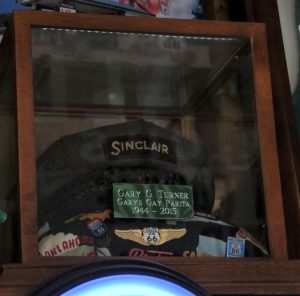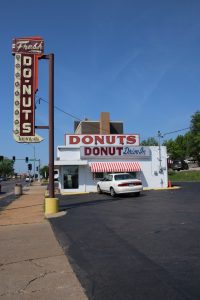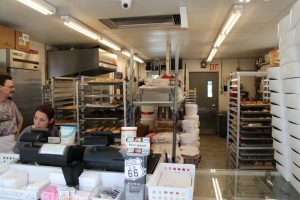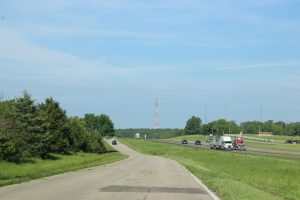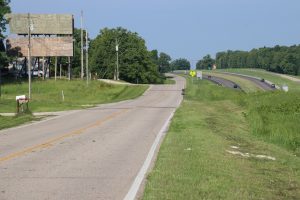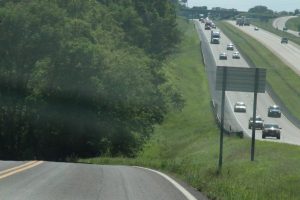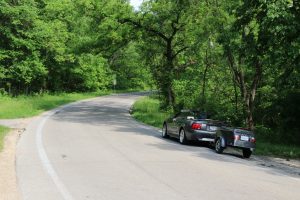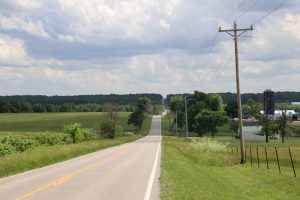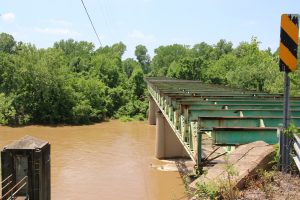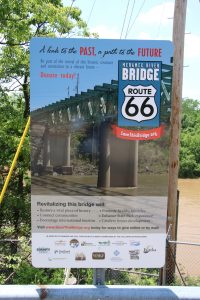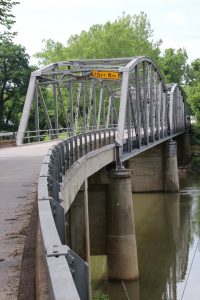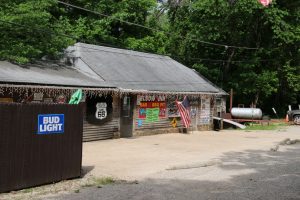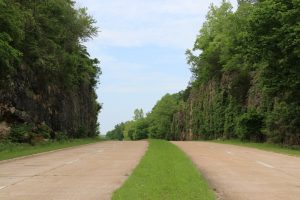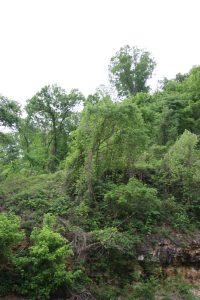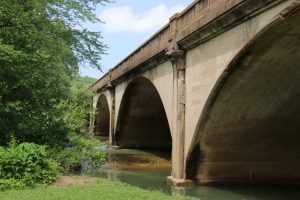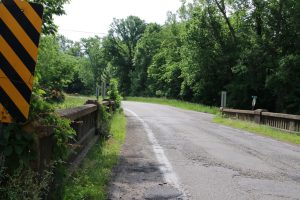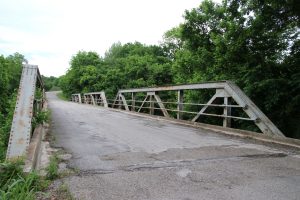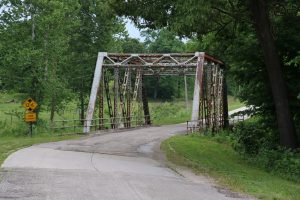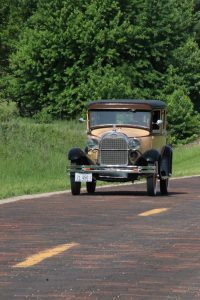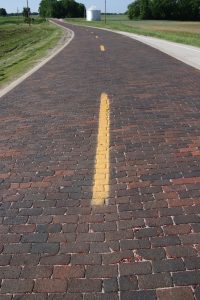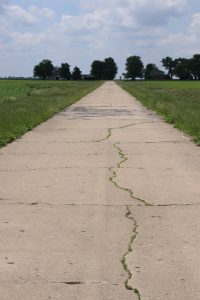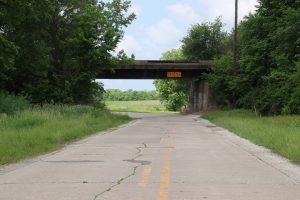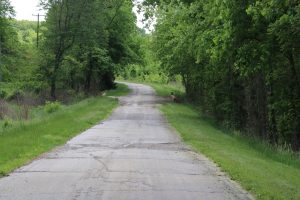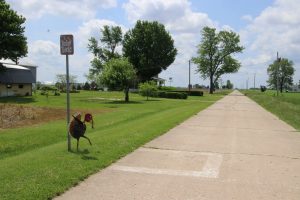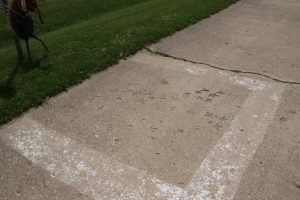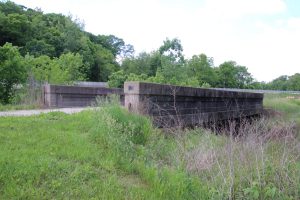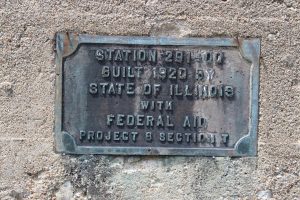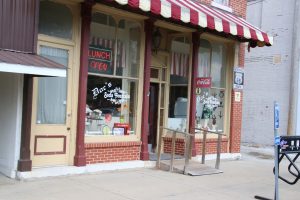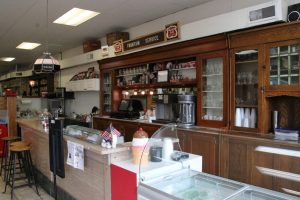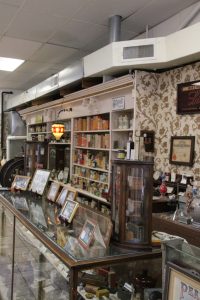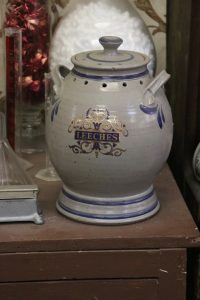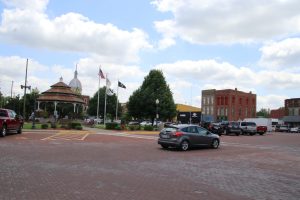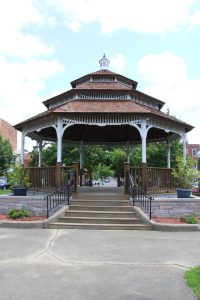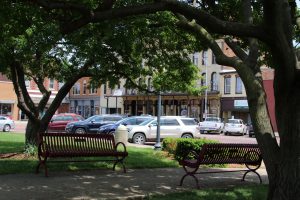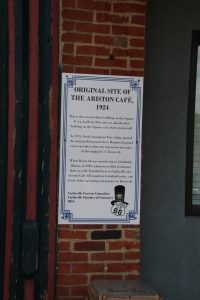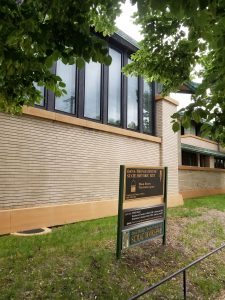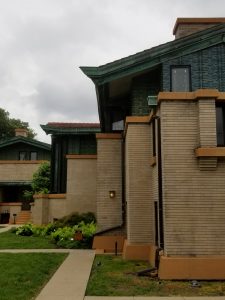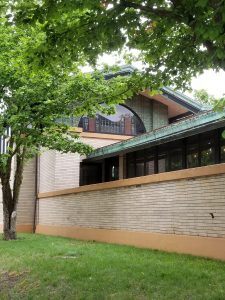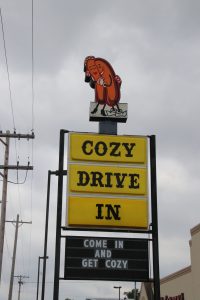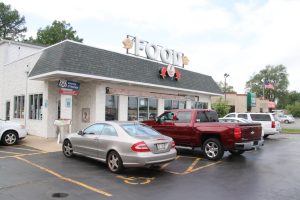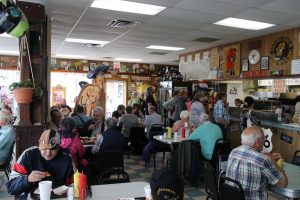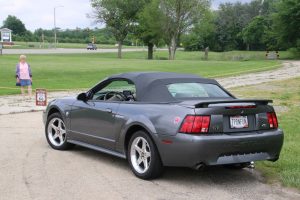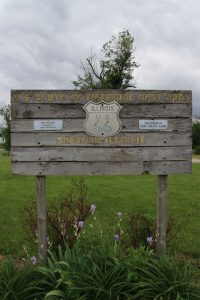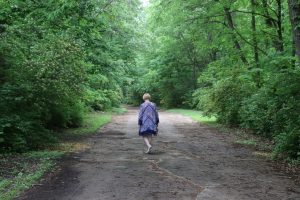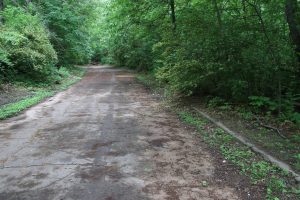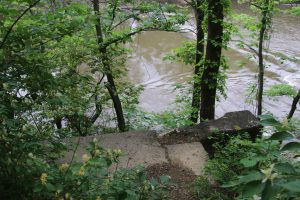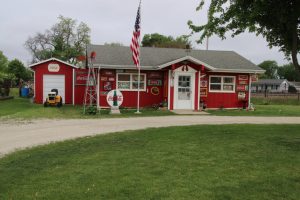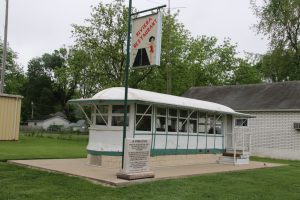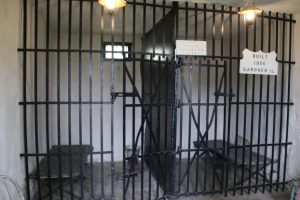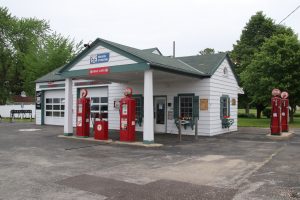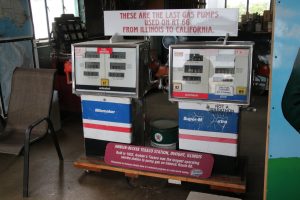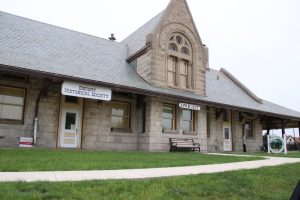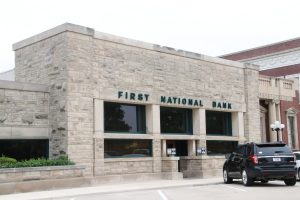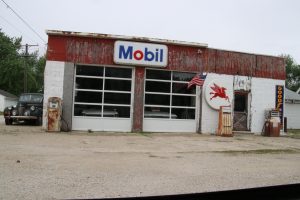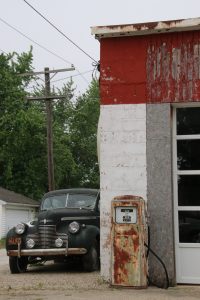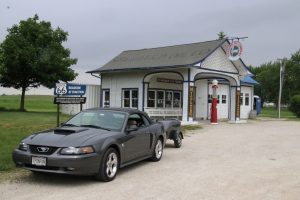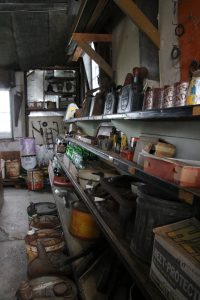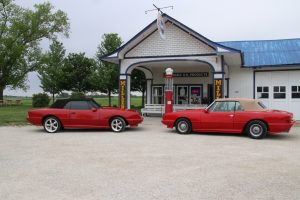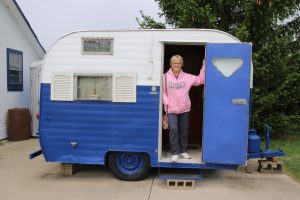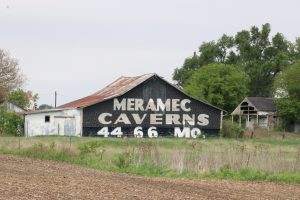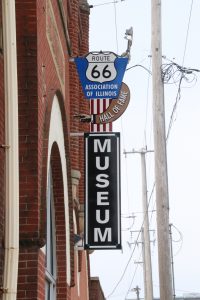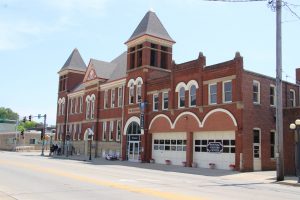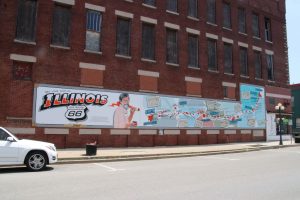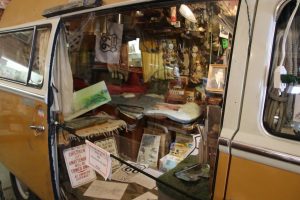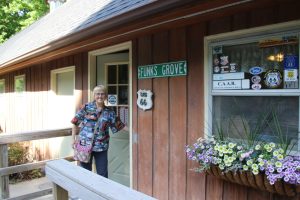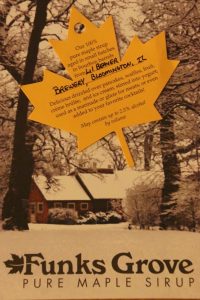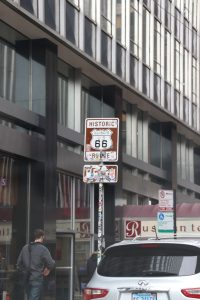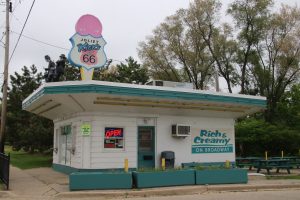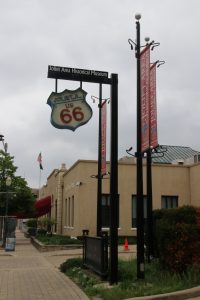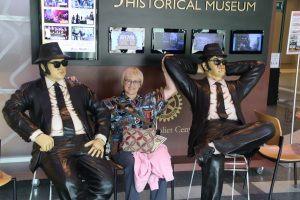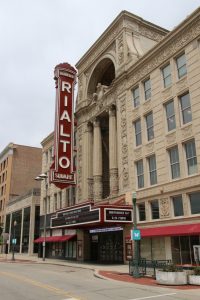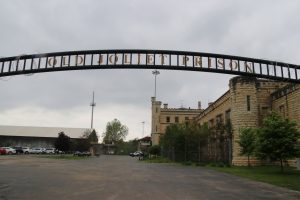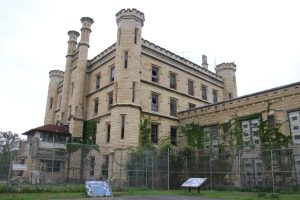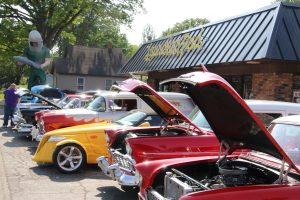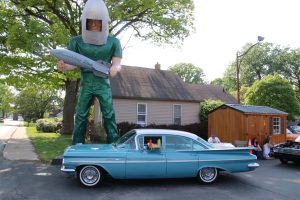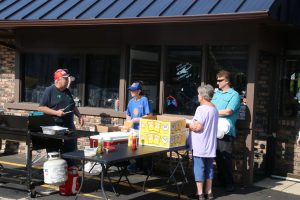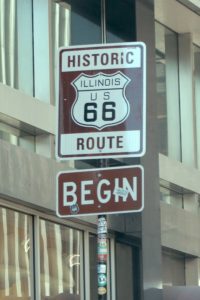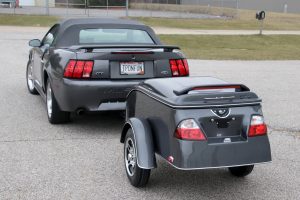We spent two and a half days traversing Missouri, and we spent two nights in exceptional restored original Route 66 motels.
We also made one other very special stop in Missouri – the Gay Parita Sinclair Station.
Wagon Wheel
Our first stop after leaving St Louis was in Cuba Missouri at the Wagon Wheel Motel. The motel is now owned by Connie Echols, who helped rescue the property by putting effort into carefully restoring it to provide nostalgic lodging for travelers exploring Route 66.
The motel was originally built in the mid 1930’s as a cabin motor court to provide lodging for travelers on Route 66. By the early 1940’s, the property had evolved to include the cabins as well as a small station and café. All the buildings were constructed of stone and solidly built.
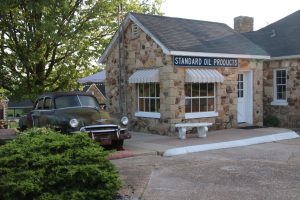
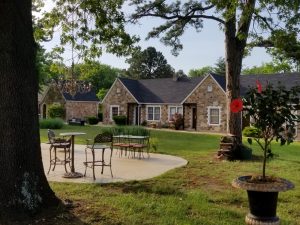
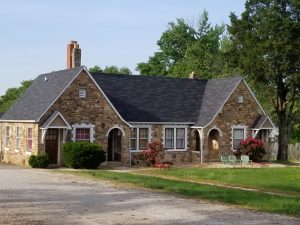
Although the property changed hands several times along the way, it seems the owners always realized the historical value of the property. It was listed on the National Registry of Historic Places in 2003. Connie bought the property in 2009 and has been working on restoring it since. The rooms are being restored to their quaint and cozy 1930 style, many decorated with period pictures and motifs. For our stay, we were in the Marilyn Monroe room, with a headboard adorned with her picture and a small picture of her on the wall over the toilet.
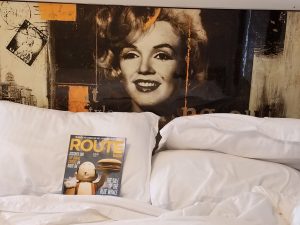
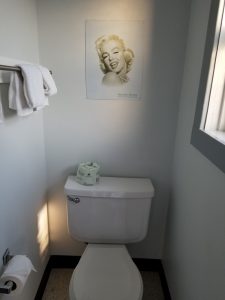
Also restored is the vintage neon sign for the motel.
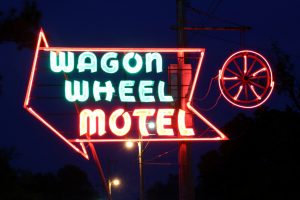
The next morning, we checked out of the Wagon Wheel and stopped in Cuba at Shelly’s, a small family café, for a hearty breakfast. When traveling, we’ve found it’s great to stop at these small town diners for breakfast or lunch. They’re generally great values (delicious food at good prices), a peek into the daily life of the community, and they always treat you like friends and family.
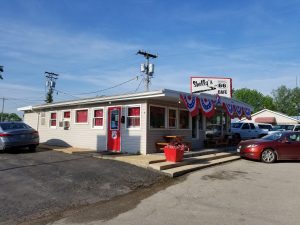
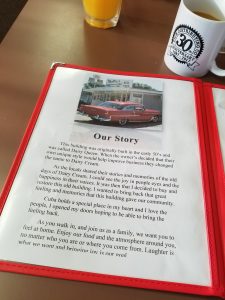
Cuba is a quiet little community of 3300, and the city fully embraces it’s heritage of being on Route 66 with a number of murals on buildings along the old Route 66 corridor. There were also some very tasteful renovations and repurposing of old buildings, including a Phillips 66 station recently repurposed as a coffeshop (the Four Way), right on the corner of the main downtown intersection.
With full bellies, we headed out of Cuba to enjoy more of Missouri Route 66 and find our next iconic motel stop.
Boots Court
Our second night in Missouri was at the Boots Court in Carthage Missouri.
Arthur Boots built the first stage of his motel in 1939 at what he felt was the “Crossroads of America”, the intersection of US Routes 66 and 71. He built in stages, starting with a gas station and office, quickly adding the first four units behind the station as he drew customers.
His location was good, and he designed the motel to capture the height of contemporary comfort and conveniences, using an art deco, streamlined design, tiled bathrooms, carports, and advertising a “radio in Boots expanded rapidly with an additional four units.
In 1946, with a new owner, a rear annex with five additional units was opened on the back of the property.
In 2001, the property was sold to an investor who intended to demolish the building and use the property for a new development. When the plan fell through, the bank repossessed the building and sold it at auction, Two sisters, Debye Harvey and Priscilla Bledsaw successfully bid on the property with the intent of restoring it, and the restoration continues today.
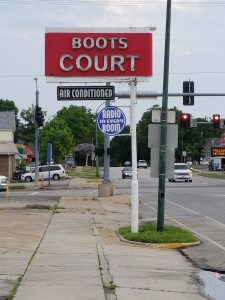
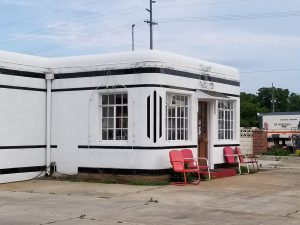
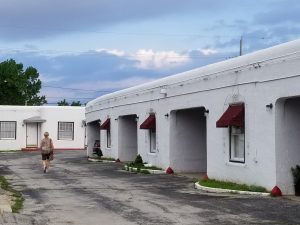
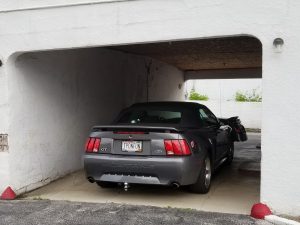
It’s reported that Clark Gable stayed at the Boots Court at least twice. The rooms are spacious for the period they were built, and they are tastefully decorated with period furnishings and wall hangings. Staying true to the original advertising, there are no phones nor televisions, but there is still a radio in every room.
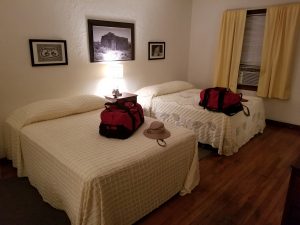
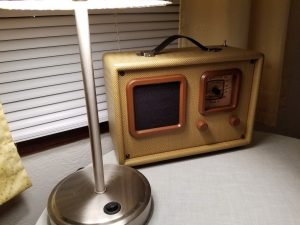
The original neon has been restored and makes the motel glow at night.
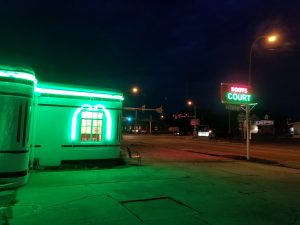
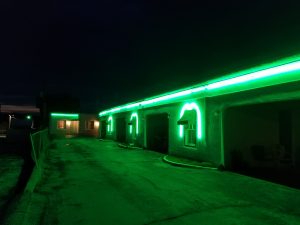
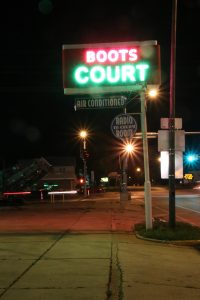
A Remembrance Visit – Gary’s Gay Parita
When we did Route 66 in 2012, one of our most memorable and delightful visits was with Gary Turner at his restored Gay Parita’s gas station just west of Springfield Missouri. It was later in the afternoon when we were cruising down a straight stretch of the original 66and we happened on this nicely restored station on the side of the road. I managed to stop the car and edge it over to the side of the road just past the station, and I got out to take a few pictures. Just as I was finishing up a older gentleman in work clothes walked out from the back of the station, Tootsie Roll Pop in his mouth, and waved, asking why I was leaving so soon, then inviting me in to look around and chat.
That was how I met Gary Turner. He was a bit of a crusty old gent, but he knew the station, the history of the area, and a lot of information about Route 66. He told me to bring the Mustang onto the property and pull it into the station and up to the pumps for a photo op.
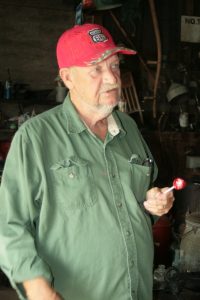
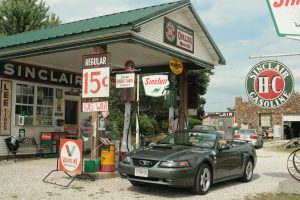
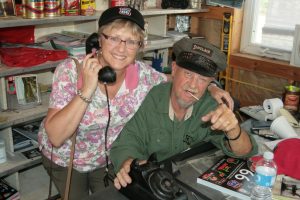
We had a great time with Gary, and we bought a photobook of Route 66 attractions (including the Gay Parita station) from him. I watched as he carefully turned to the article about his station and he autographed the page. When we left he gave us a Route 66 Root Beer and told us: “Down the road, I want you two to stop and get some ice cream and make a couple of Route 66 Root Beer floats. And when you do, have pleasant memories of your trip down the Mother Road!”.
Gary made that 2012 trip on Route 66 memorable. It was a few years later, in early 2015, that we learned he had died in January of that year. We felt like we lost a dear friend.
Thankfully, Gary’s daughter Barb has taken over the station and now operates it, still catering to those traveling down Route 66. We stopped to meet Barb, and we shared our memories and pictures from our first visit with her Dad, our friend. Just as before, it was a great visit. Barb has done a great job of keeping up the historic property and she shares her Dad’s enthusiasm in meeting those venturing down the highway.
It was great to see the old place, especially the memorial garden that Barb built in honor of the Mom and Dad.
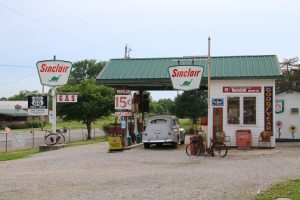
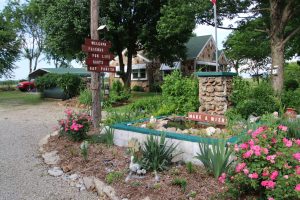
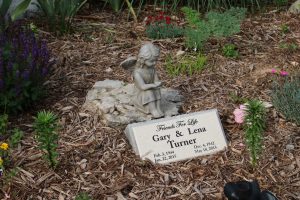
Rest in peace, Gary! We are so grateful we had a chance to share an afternoon with you that day in June 2012.

